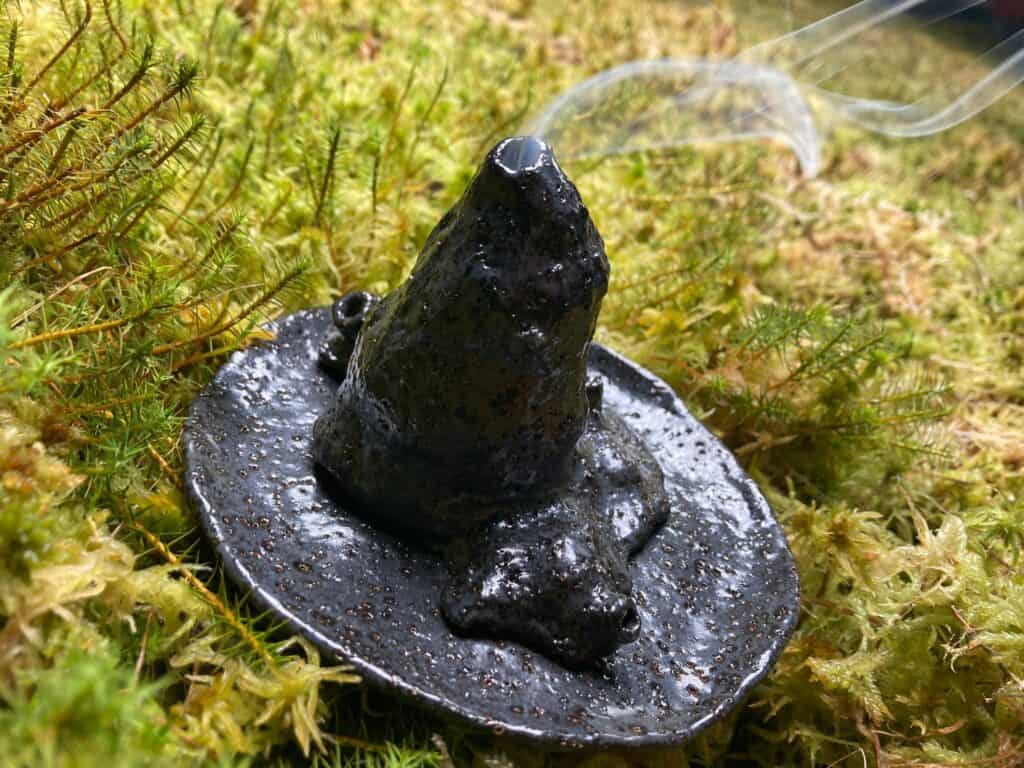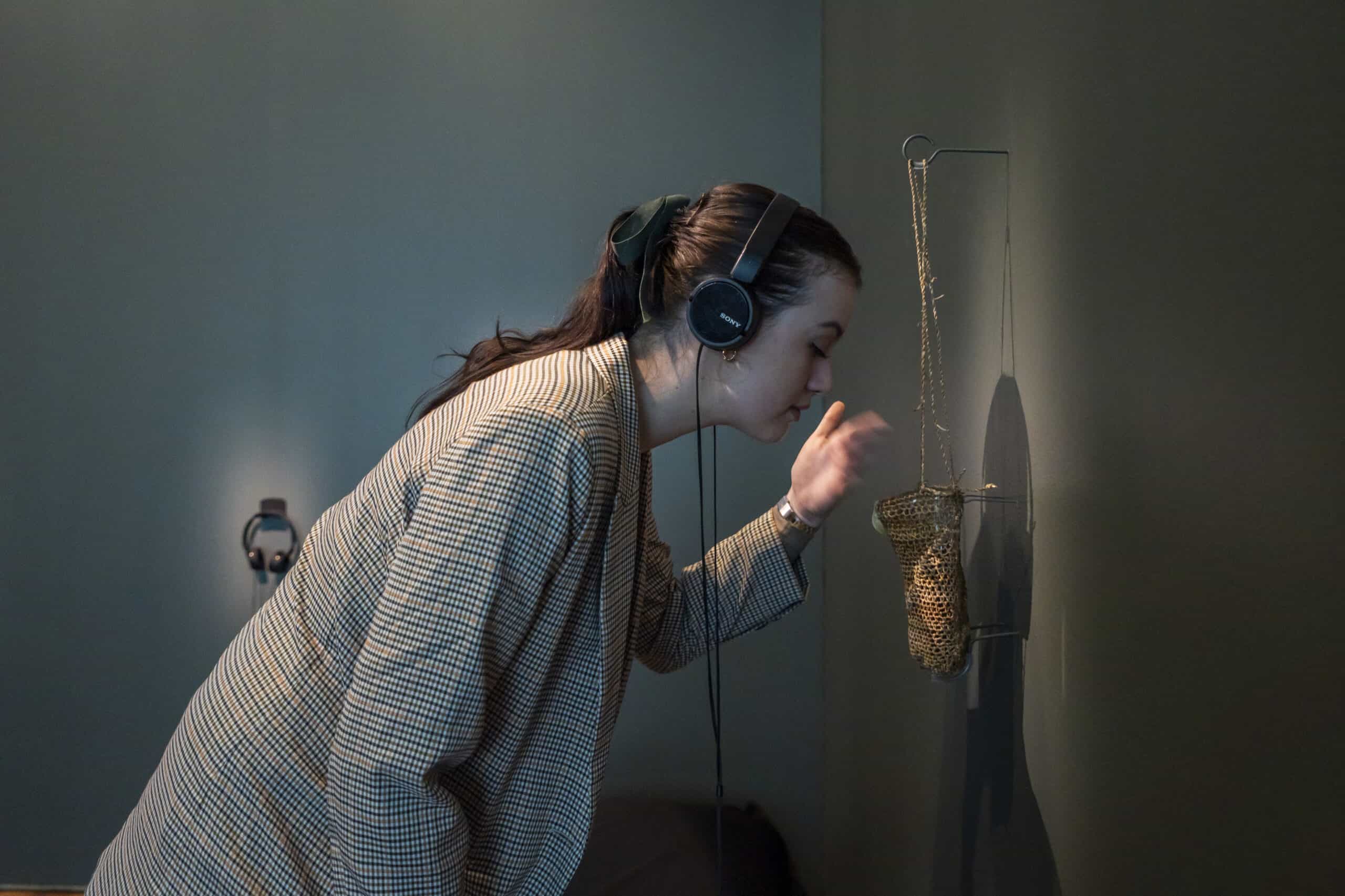Inspired by the Patagonian Peatland Initiative and Ensayos transdisciplinary research practice, the peatlands of Patagonia represented Chile at the 59th Venice Biennale in 2022. The collective project Turba Tol Hol-Hol Tol, led by curator Camila Marambio, sought an experimental path toward raising awareness of, and preserving, peatlands.
“Hol-Hol Tol” means “the heart of the peat bogs” in the language of the Selk’nam people, one of the original inhabitants of Tierra del Fuego. The curatorial project offered an immersion into the material and ancestral experience of the peat bogs. This included a residency in Tierra del Fuego, a series of rumors, a website, a multi-sensorial installation created by Ariel Bustamante, Carla Macchiavello, Dominga Sotomayor, Alfredo Thierman and Camila Marambio that house the functioning peatland science experiment, SphagnumLAB, and a book all highlighting an aesthetic of care and art as a conductor of real commitments to advance on the path of ecological action.
As a result of creative fieldwork and monthly online meetings across continents, Ensayos pods in New York (Amenia), Norway (Oslo) and Australia (Minjerribah/Terrangeri), made perfumes, incense and unique vessels as gifts of scent from their local peatlands to contribute to the multisensory experience of Turba Tol Hol-Hol Tol. The scents were gifted to the Chilean Pavilion to enhance the experience of the immersiveness.
The bogs and fens of New York, Oslo and Minjerribah/Terrangeri are diverse in their ecologies, cultural meanings, and conservation status. With these olfactory offerings Ensayos invited speculative dives into the depths of peatlands—sniffing and thinking with all of the hidden layers, stored matter, and lively interspecies relations that make them crucial sites of eco-cultural heritage.
Turba Tol Hol-Hol the book, edited by Carla Macchiavello and Camila Marambio, is a compendium of the extensive eco-cultural thought of Latin American authors who center their attention on struggles, ways of doing, and experiences of care from the South. Included in the book is an olfactory offering by Ensayos and a text by Ensayista Denise Milstein based on her experience and conversations about the scent gifts. The book will be available for download in August 2023. Its paper version in Spanish will be launched in Tierra del Fuego during August and will be distributed for free to libraries, schools, and cultural centers in all 13 regions of Chile.
For the launch of “Turba Tol Hol-Hol”, the Ensayos pods have created limited edition olfactory inserts so that readers of the hard copies can experience the multisensory dimension of peatlands.
Amenia, New York, United States


The bogs and fens of this region are marked by loss—either exploited a century ago or lost to contemporary eyes that are not yet attuned to their depth and importance to climate-future. This project marks their coming out as extraordinary, carbon-sequestering hydrological engineers of immense cultural and ecological value. We have created two scents, presented in blown glass vessels, that represent speculative olfactory tours of the living upper layer and fossil peat below.
DAMP A full-body submersion into the damp ecosystem of vital, water-retaining mosses, and waterlogged flora. An invitation to imagine the uneven contours of Sphagnum capitula as perfectly designed aqueous carrier bags. A call to drip, pour, leak, slip, slide, and become slippery. This scent is included in the North American scent insert.
RICH A dense meshwork of the musky, malted, medicinal, and tarry saps, excretions, and notes that connect peatland life through the aromatic molecules they produce within their digestive, root, and trunk systems. They are knotted together by an acidic note mimicking the uniquely low pH of the bog that makes all this richness possible.
Participants: Carina Cheung (glass fabrication), Christy Gast (artist), Camila Marambio (curator), Denise Milstein (writer/sociologist); Agustine Zegers (olfactory artist).
Bogerudmyra, Oslo, Norway


Do the odors of bogs carry meaning? And what do they smell like? With these questions in mind the artists Randi Nygård and Simon Daniel Tegnander Wenzel have visited a number of bogs in Norway. At Bogerudmyra, a bog in a protected wetland area in the city of Oslo, they developed their gift of scent – Wolves in The Mire.
At the bog the artists felt strong whiffs of wet soil, ocean, dried grass and pine trees. The odors were not rotten, as some might expect. The bog had an earthy, heavy, resinous, fertile and rich scent. It seemed dark, but still it was fresh and clear. There were hints of wet wool and animals, like the smell of a wet dog. Or maybe a wolf?
Ten percent of Norway consists of bogs, which partly are protected by law. But, even if we know how important bogs are, for water, life and climate, exceptions from the protection are still made. Wetlands are ditched and drained, made into garden peat, turned into farmland or demolished to build highways, houses, shopping malls or cabins.
In Scandinavia there is a saying; owls in the moss. The expression is strange, but frequently used. It means that something is not quite right, or that a danger is lurking. It was originally a Danish expression saying that there are wolves in the mire. Owls and wolves, moss and mire are very similar words, and even more so in Danish. The wording changed as the surrounding world changed, the wolves went extinct and the bogs were drained.
What comes forth if we continue the development of “the owls in the moss”- expression, by adding words with similar sounds? Can these words, together with the scents, tell us something about the future and the past of our bogs?
The bog itself is a deep culture-nature carbon archive, conserving the memories of how humans and animals interacted with the landscape, through thousands of years back in time.
In and near many bogs there are seemingly dead pine trees, called tyrived. These grey, crooked, dry and old trees may still have all their sap in the roots. Wood from these roots is often gifted, as they are full of resinous scent and you can use them to light a fire on rainy days in the forest. The trees are alive, they have retreated underground, into their roots, into the bog. And one day they may shoot up again, as a new vital sapling.
Participants: Randi Nygård (artist), Simon Daniel Tegnander Wenzel (olfactory artist), Karolin Tampere (curator/artist), Camila Marambio (curator)
Minjerribah/Terrangeri, Queensland, Australia


Minjerribah/Terrangeri in Moreton Bay, the traditional lands and waters of the Quandamooka People, has been a local site of inquiry, connection and rest for the Australian pod. Bringing together our experiences as a group that includes Quandamooka lineage, we have sought connections within the swampy ecosystems, to each other and to the histories embedded in botanical and fire archives of peat.
Unlike the rain absorbing mossy bogs of Tierra del Fuego, the sandy patterned fens are fed mostly by groundwater and are dominated by grasses, sedge and rushes. They are formed by peat accumulating at varying rates in different places, leading to a patterning of black pools and vegetated risings. Fire has been a part of fen development on the sand islands for millennia. Peat core samples from the island tell stories of major climatic shifts and human activity. They tell of a transition from frequent low intensity fires linked to traditional fire management practices to lower frequency burns in the post-colonial settlement period. Existing between the fossilised lines of pollen and charcoal lies a message, where traditional knowledge was being practised there was greater biodiversity. This continues to be understood by the Quandamooka people today who are working, together with fire ecologists, to reinstate regular low intensity burning and maintain health of the peatlands.
Standing tall in many of the island’s peatlands is Ungaire, a reed and cultural weaving fibre with distinct pink and cream hues. The Carmichael women have been working alongside their family, Elders, and community members on the regeneration of Quandamooka weaving practices. Our scent marker offers pink hues of Mangrove root dye swirling beneath the hands of Quandamooka artist, Sonja Carmichael, collecting Ungaire – the same hands that continue to remember and revive her family’s heritage through traditional weaving techniques and contemporary adaptations.
Our gift of scent is titled ‘Jalo Gaba’ which is Jandai language (a dialect specific to Quandamooka people) for ‘good fire’. It was first gifted to Turba Tol as an incense and a ritual to honour the continuum of cultural land management practices on Minjerribah, including weaving and fire management practices that are intertwined with the peatlands. With this card, there is also a soft smokey base underlying vegetal notes – an invitation to imagine the possibility of fire as care.
Participants: Elisa Jane Carmichael (Quandamooka artist), Sonja Carmichael (Quandamooka artist), Freja Carmichael (Quandamooka curator), Jasper Coleman (ceramicist), Renee Rossini (ecologist), Caitlin Franzmann (artist), Camila Marambio (curator).

